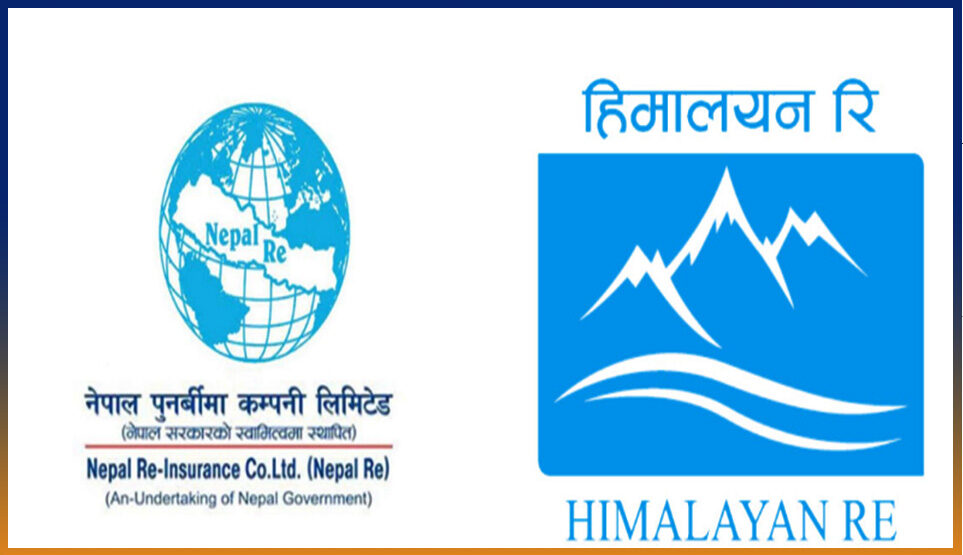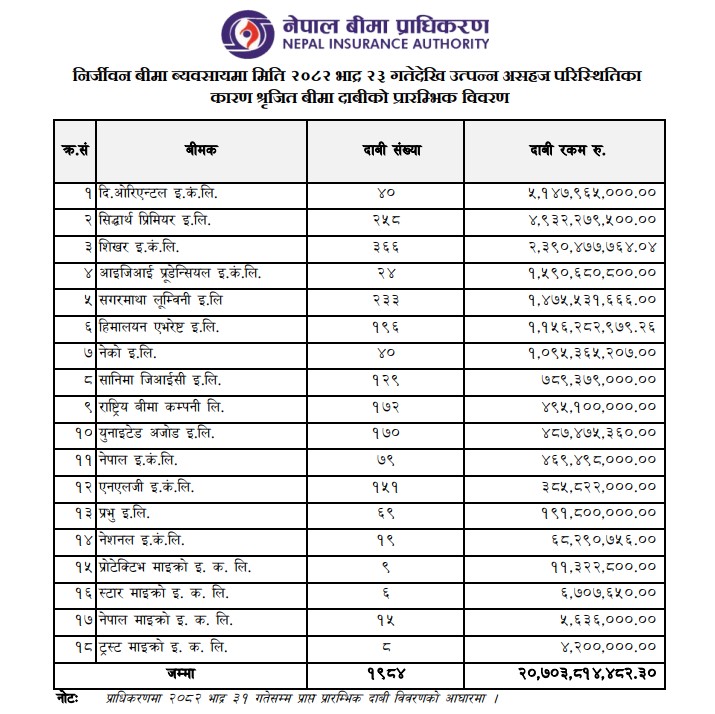Nepal Re and Himalayan Re Capable of Managing Gen Z Protest Claims, Say Officials

Kathmandu – A wave of rumors in the capital market today suggested that Nepal Reinsurance Company was under financial strain due to the large volume of insurance claims filed following the Gen Z protests. The speculation intensified after the company’s stock price plunged on the Nepal Stock Exchange, triggering a broader market decline. Himalayan Reinsurance Company also witnessed a significant fall in its share price. However, industry officials have clarified that the situation is far more stable than portrayed.
According to data from the Nepal Insurance Authority, total insurance claims related to the Gen Z protests amount to Rs 20.7 billion. Importantly, insurers are not required to pay the full amount. Following claim assessments, the liability is expected to reduce by 15 to 25 percent, leaving insurance companies responsible for approximately Rs 16 to 17 billion.
The claims fall under riot and terrorism insurance, which follows a 65:35 risk-sharing arrangement between Nepal Reinsurance Company and primary insurers. On this basis, Nepal Reinsurance is expected to handle around Rs 14 billion of the total claims, while Himalayan Re’s share is projected at Rs 3.5 billion. After final evaluations, Nepal Re is likely to pay between Rs 7.5 billion and Rs 8 billion, with Himalayan Re covering about Rs 3.5 billion.
 Despite concerns in the market, both reinsurance companies are said to be on solid ground. A senior official at Nepal Reinsurance Company told Beemapost, “We have retro-insured with A-rated reinsurers abroad. There is no need to panic.” Similarly, Himalayan Re has also arranged retro-insurance with internationally recognized reinsurers, ensuring that a significant portion of the liabilities will be covered by foreign partners.
Despite concerns in the market, both reinsurance companies are said to be on solid ground. A senior official at Nepal Reinsurance Company told Beemapost, “We have retro-insured with A-rated reinsurers abroad. There is no need to panic.” Similarly, Himalayan Re has also arranged retro-insurance with internationally recognized reinsurers, ensuring that a significant portion of the liabilities will be covered by foreign partners.
Officials at the Insurance Authority have also reassured the market, confirming that Nepali reinsurers are not at risk. Since both companies operate under international standards and maintain strong partnerships with global reinsurers, a majority of the financial burden will be borne externally. While a certain portion — estimated at 10 to 25 percent — will fall directly on the Nepali reinsurers, experts say they remain well-positioned to manage this responsibility.
